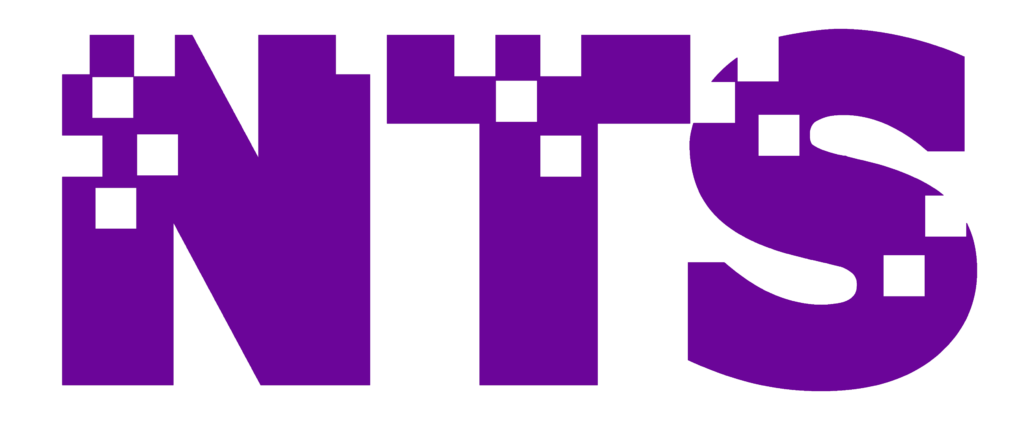Digital signs work together to build smart information systems that businesses can easily control from one place. By connecting screens, content software, and control systems, companies can quickly update multiple displays at once using standard connection methods. Businesses can share specific messages to different audiences while tracking how people interact with their displays. New smart features and tools that engage multiple senses help make messages more effective in business settings. These connected systems open up new ways for companies to communicate better with their audiences.
Key Takeaways
- Digital signage combines smart screens with management software to deliver real-time content updates across multiple displays simultaneously.
- Integration of control systems like Q-SYS enables centralized management of all AV components through standard protocols like RS232 and TCP/IP.
- Live data feeds and AI-powered tools automatically refresh content and personalize messaging for different audience segments.
- Interactive features such as touch screens and QR codes create engaging experiences while collecting valuable viewer behavior data.
- Multi-sensory integration of video and audio enhances message retention while maintaining consistent brand communication across all displays.
Understanding the Fundamentals of Digital Signage Systems
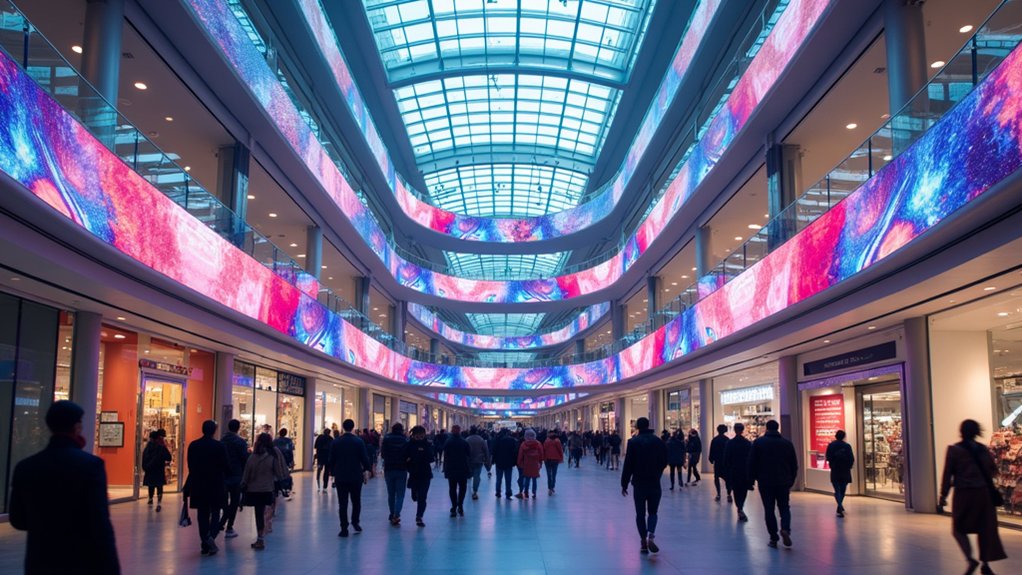
Digital signs are changing how we share information, offering much more than old-style fixed signs. These modern systems mix screens with smart software, letting businesses show fresh, eye-catching content wherever they need it.
When digital signs work together with other audio and video equipment, they create powerful ways to reach people. Clear, bright screens and touch features help grab attention and keep viewers interested, while also tracking how well the content works.
The basic setup needs connected screens, software to control what’s shown, and sound and video equipment – all working together to turn simple messages into rich, interactive experiences that can change based on who’s watching. Remote content management capabilities allow businesses to instantly update messaging across multiple displays for maximum impact and efficiency.
The Role of AV Control Systems in Modern Communications
AV control systems form the core technology that runs today’s communication tools. These smart systems work together smoothly using standard connection methods, helping create information systems that make organizations work better.
Main benefits include:
- Managing all content from one place using systems like Q-SYS and Kramer control
- Screens that run on their own using common connection types like RS232, TCP/IP, and GPIO
- Simple setup and connection handled by AV experts
This technology helps organizations share clear messages while keeping full control of their digital screens, creating a unified and quick-responding information system. Professional AV services provide essential expertise in selecting and integrating the right equipment to maximize system functionality and performance.
Key Components for Seamless Integration
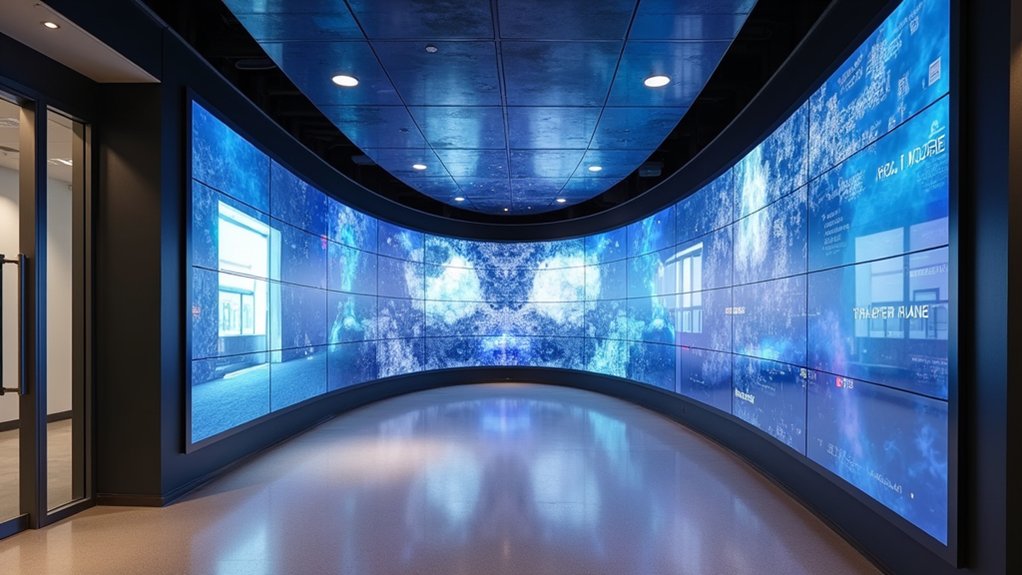
The smooth connection of digital signs to AV control systems needs several basic parts working together. Teams that set up these systems use simple ways to link devices and make them talk to each other.
| Component | Function |
|---|---|
| Protocols | RS232, TCP/IP, GPIO connections |
| Platforms | Q-SYS, Kramer control systems |
| Hardware | Digital screens, control boxes, servers |
These parts help create displays that work together and grab people’s attention through one main control point. The setup lets organizations see how well things are working and change them as needed, making it easier to share the right content at the right time. This basic structure helps messages reach viewers while keeping all AV equipment running smoothly. Interactive display systems enhance customer engagement while reinforcing brand messaging across the business space.
Building Effective Content Management Strategies
Digital signs work best when you plan your content carefully with clear goals and know who will see it. Good content systems let you control and schedule what appears on screens from one place, helping you show the right messages to your viewers.
Key parts of good content planning:
- Using live data to keep information fresh and up-to-date
- Checking how well content performs to make it more engaging
- Keeping brand look consistent while making sure everyone can understand it
When you organize content this way, your messages stay useful and meaningful while following company rules. Using a strong content system brings all these pieces together, making your digital signs work well for the long term. AI-powered tools are revolutionizing content creation by automating tasks and enabling personalized messaging that adapts to viewer preferences.
Maximizing Impact Through Multi-Sensory Experiences
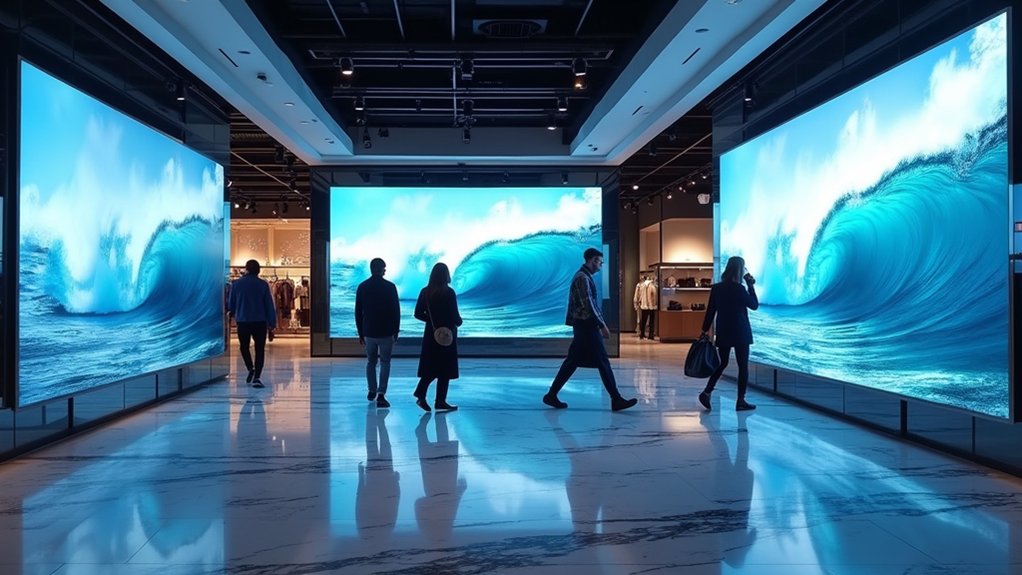
Multi-sensory digital signs work best when they mix both pictures and sound together. Studies show that when people see and hear a message at the same time, they remember it 60-70% better and understand it 40% better than just seeing it alone.
When screens use both video and sound, they get their message across much faster than old-style, still signs. By carefully timing what people see with what they hear, these displays keep viewers more interested and involved. This smart way of showing content creates a network of digital signs that helps more people notice and connect with brands, making the biggest possible impact through well-planned sight and sound experiences. Remote monitoring capabilities allow businesses to access and adjust these multimedia displays from anywhere, ensuring optimal performance and engagement.
Real-Time Data Integration and Dynamic Updates
Real-time data allows digital signs to work as smart, quick-responding message systems. By connecting with building controls and smart devices, today’s digital signs can change their content right away based on what’s happening around them and what needs to be shown.
Digital signs with data connections can:
- Use cloud systems to control all screens from one place and update them instantly
- Track how people watch and respond to help make better content choices
- Show different messages for different people based on who they are, where they are, and what they like
When content changes by itself this way, messages stay useful and meaningful while making the whole system work better through smart connections.
Enhancing User Engagement With Interactive Features
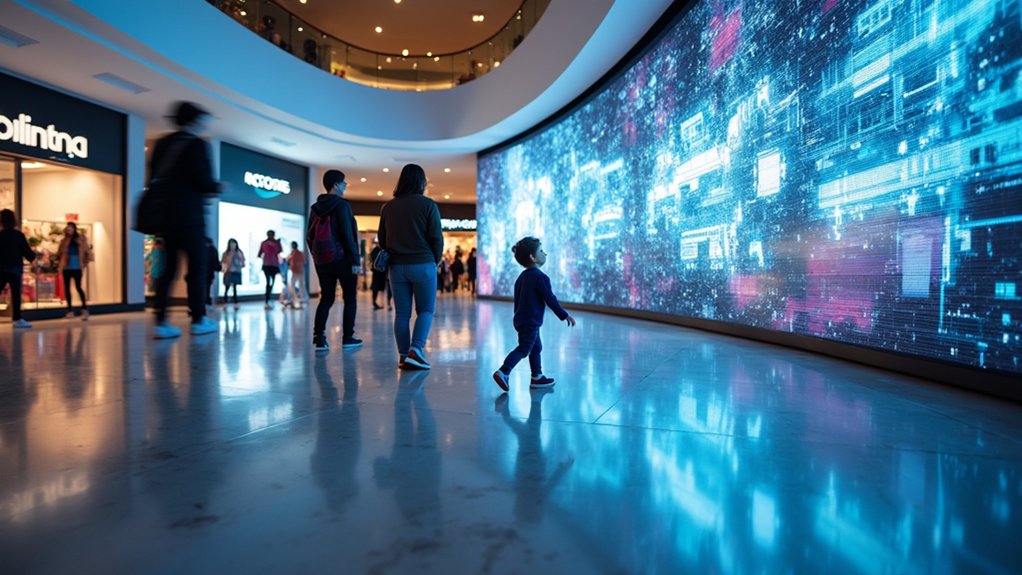
Real-time data helps turn digital signs from simple displays into tools that get people involved. Touch screens and hand movements let users browse content easily, while QR codes and phone connections create personal viewing options. Self-service stands help customers look up product details on their own, helping them feel more connected to brands.
Fun, game-like features make people stay longer and take part more actively. These hands-on tools create spaces where users can connect with content in ways that work best for them. By offering many ways to interact, these systems make sure everyone can easily use and enjoy the content, no matter what they prefer.
Measuring Success Through Analytics and Metrics
Digital signage works best when you track how well it’s doing, study the results, and make improvements. Tools that collect data help you understand if your content is working and how people respond to it.
Important things to measure include:
- How many people look at your signs and how long they stay – this shows if people are interested
- How many viewers take action and whether the money spent was worth it
- Who your viewers are (age, gender, etc.) and how they interact with your signs – this helps you show better content
Security Considerations for Integrated Systems
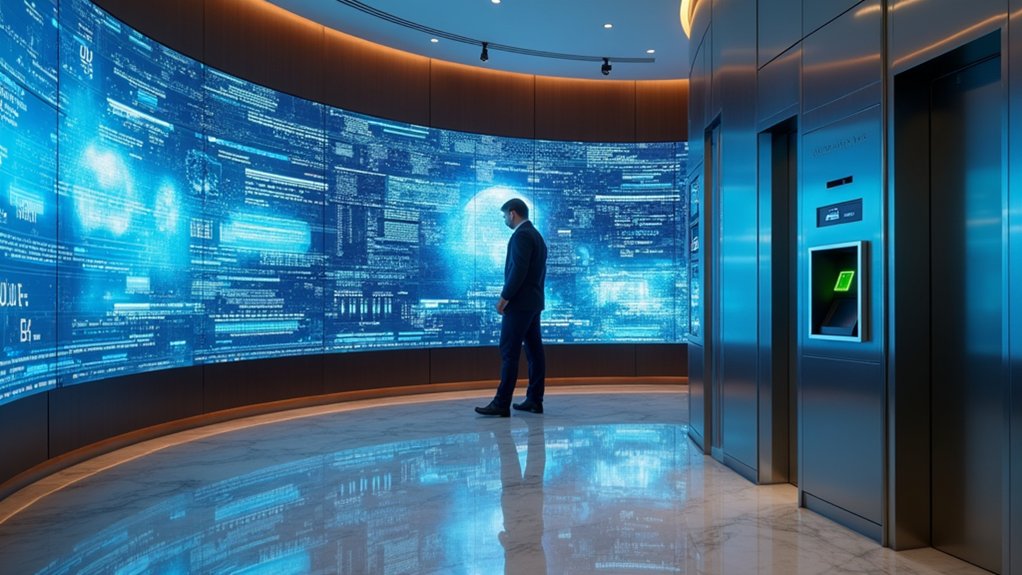
Security Guidelines for Connected Display Systems
Keeping digital signs safe needs a complete security plan that protects both hardware and network connections. Basic security tools like secure web connections and strong password systems help keep the system safe.
Keeping software up-to-date with the latest fixes helps prevent problems, while using multiple steps to check user identity ensures only the right people can access the system. Splitting networks into smaller parts and using firewalls keeps digital signs separate from other systems, which reduces risks.
Watching system activity and keeping detailed records helps catch problems quickly when they happen. These combined safety steps build a strong system that protects both the content being shown and how the system works, while keeping everything running smoothly.
Future Trends in Commercial AV Information Solutions
The way businesses share information through AV systems is changing fast. Digital signs are getting smarter by connecting to the internet and using cloud storage, which helps them show useful information right when it’s needed.
Major changes in AV systems include:
- New screen types like MicroLED and bendable OLED screens that can be set up in different ways and show clearer pictures
- Smart systems that use AI to learn about viewers and show content they care about
- Fast 5G networks and nearby computer processing that let people control displays with hand movements and see mixed reality content
These improvements, along with eco-friendly screen technology and clean power options, are creating smart business spaces that change based on how people use them and what they like.
Frequently Asked Questions
What Is the Average Lifespan of Digital Signage Hardware Before Requiring Replacement?
Digital signs typically last 5-7 years before needing replacement. How long they work depends on where they’re placed, how well they’re maintained, and how bright they run. Taking good care of the equipment and updating its technology regularly helps the signs last longer and use less power.
How Do Extreme Weather Conditions Affect Outdoor Digital Signage Performance?
Strong outdoor screens need special protective cases that keep them safe from weather. These cases include cooling and heating systems, moisture controls, and shields against bright sun. Protection from dust, safety from lightning strikes, and emergency power help keep the screens working even in bad weather.
Can Digital Signage Systems Integrate With Employee Scheduling and Attendance Systems?
Digital signs can work together with employee systems to show who’s at work, display work schedules, and connect with payment records. These signs also help control building access and send out emergency alerts throughout the workplace.
What Backup Solutions Exist for Digital Signage During Network Outages?
Backup plans for digital signs include playing saved content when the internet goes down, switching to backup displays, and having extra network connections ready. Local storage keeps content available, backup power keeps screens running, and storing files online helps recover quickly. Teams can check and fix problems from anywhere during network problems.
How Does Ambient Lighting Affect Digital Display Visibility and Content Readability?
Bright or dim surroundings strongly affect how well we can see digital screens. Screen readability works best when displays are placed thoughtfully, screens adjust their brightness on their own, and room lighting is set up correctly both inside and outside buildings based on proven lighting rules.
Conclusion
Digital signage integration transforms commercial AV information systems through smart hardware-software connection, instant content updates, and data-based improvements. Nye Technical Services helps organizations achieve better audience engagement, smoother operations, and clearer information sharing through these solutions. As technology grows, integrated digital signage systems keep getting better with AI personalization, IoT connections, and more ways to interact, making them essential tools for modern business communication.


